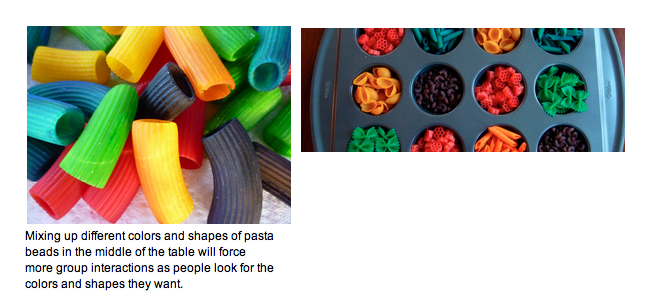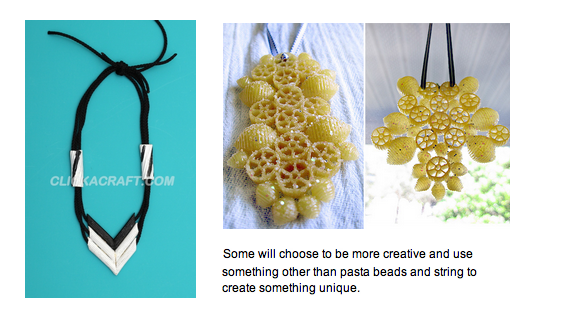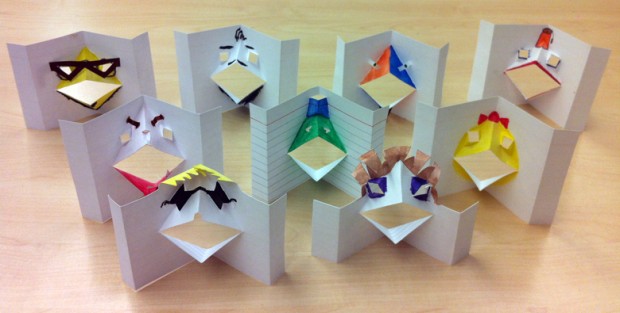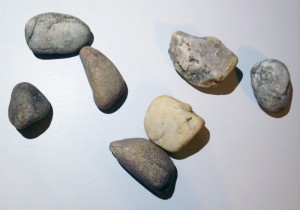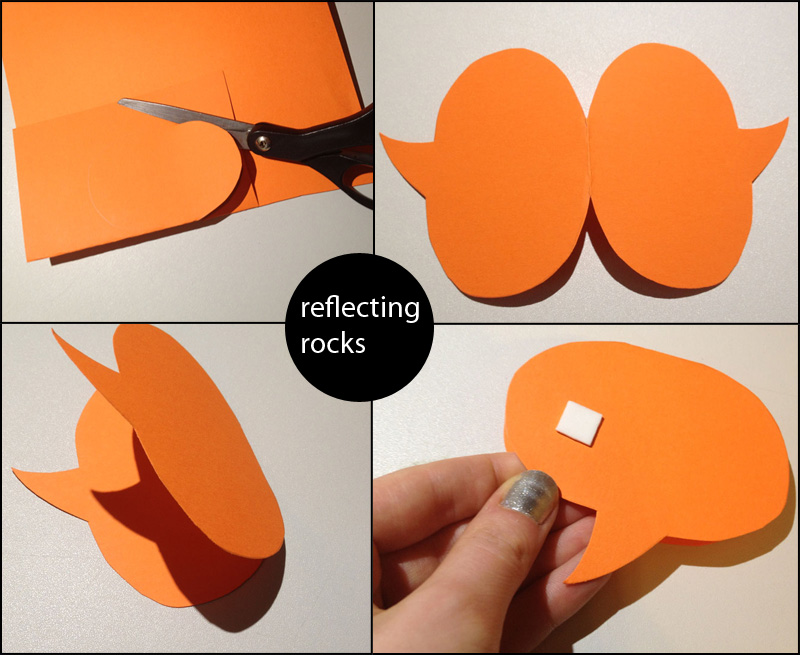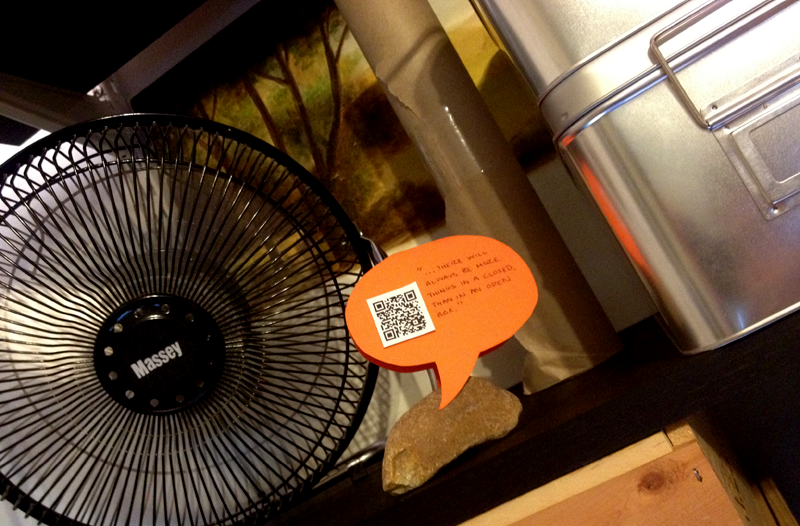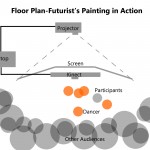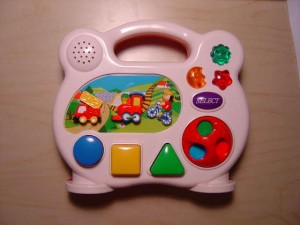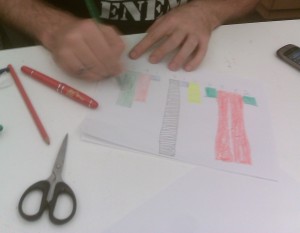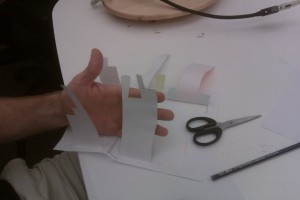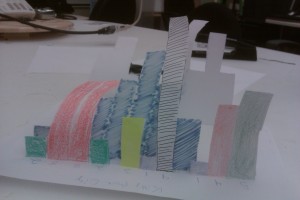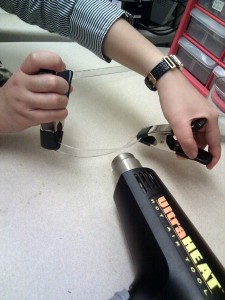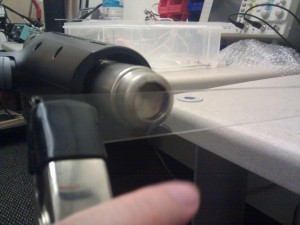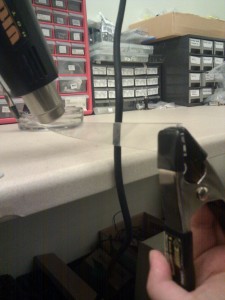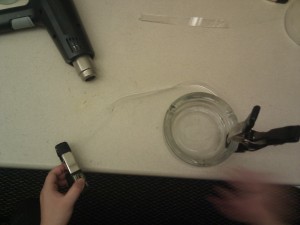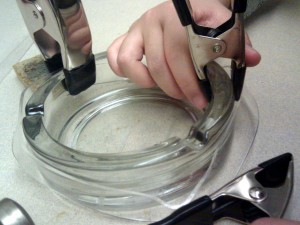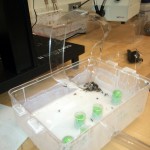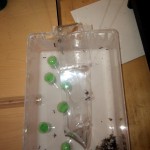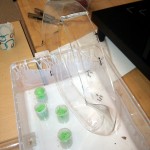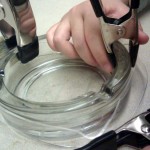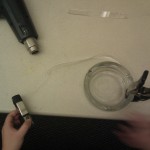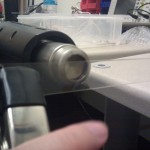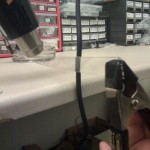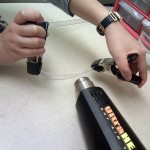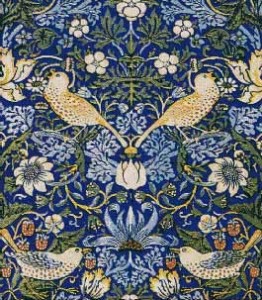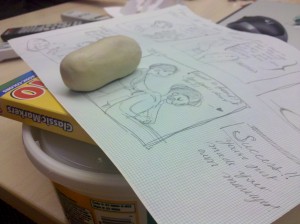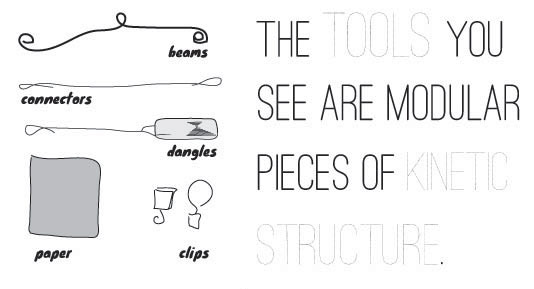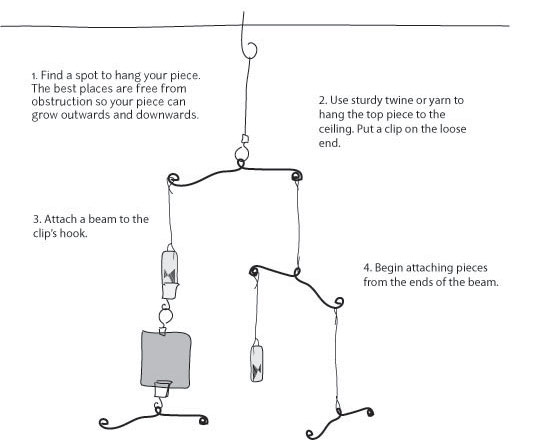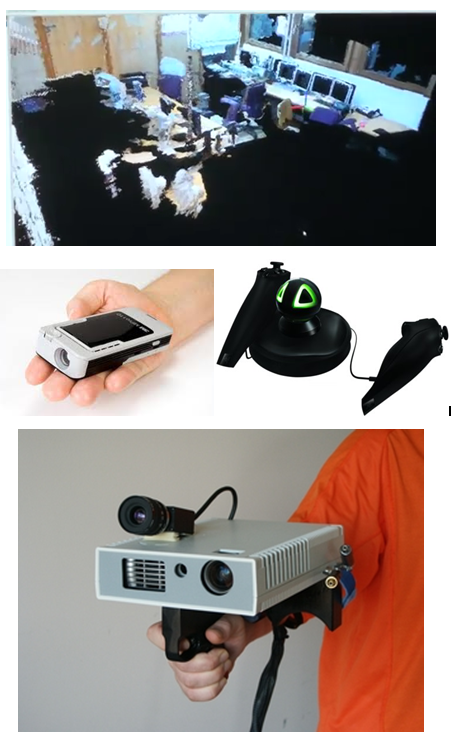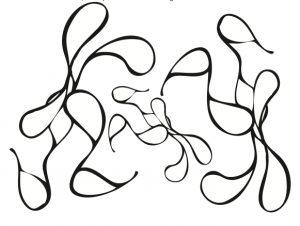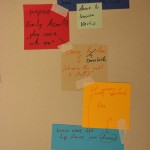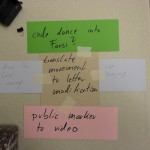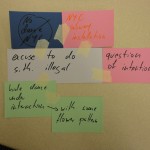Here is the text from my proposition for a FLUX 2012 project. The full PDF with pictures can be viewed here: Antmungous_AQ_01

————————-
Antmongous
Proposal for FLUX 2012
Andrew Quitmeyer (GAtech phd researcher)
Digital world and Image Group | Multi-Agent Systems and Robotics Lab
Antmongous is an embodied, interactive exhibit featuring live, continuous communication between humans and a live colony of ants. The exhibit will be physically spread throughout the Flux festival but exist in harmony with the other works. It will encourage participant exploration by emergently provoking individuals or groups to follow ant-designated paths, but its design will not detract from or overshadow the exhibits situated along these routes. In essence, it becomes a collaborative scavenger hunt between humans and ants that runs in parallel with the festival, and requires no outside technological distractions (eg. Smartphones) on behalf of the participant.
Any money received from the commission will be spent exclusively on materials. The artist and his supporting labs will waive any other fees.
Entomological Background
Ants, such as our Aphaenogaster cockerelli, are able to work collectively to find and recover nutrients in the environment without direct communication. Simple, distributed behaviors enable many separate individuals to display emergent, large scale behaviors such as optimal path finding. The goal of Antmongous is to situate humans within this network of the ants’ actions, and have them replicate the ants’ behaviors.
CORE DESIGN
Castleberry Hill for Ants
First, we shall replicate the networked layout of the Castleberry Hill festival location, as an abstracted, 1/175 ant-scale abstracted model. Since the core area of the Flux festival takes place in a roughly 300m X 400m geographical area, the ant-sized model will be approximately 1.7m x 2.3m, or the size of a large table. Pathways such as roads, alleys, and building interiors will be featured in the model as areas accessible to the ants. Restricted areas such as rooftops or sides of buildings will be correspondingly elevated in the model and coated in Teflon paint (Fluon) to make sure humans and ants both only have access to analogous areas.
The ant colony will be loaded into the miniature model. The Queen and brood will be placed in the area of the model corresponding to the model’s location in the real world.
Track Ants
I created open-source software for analyzing the positions and movements of our ants in the laboratory environment. This same software can be used for tracking the ants in the Castleberry hill model in real-time.
Project Ants
This position data will be sent wirelessly to a mesh network of inexpensive, battery-powered XBee microcontrollers. The XBees, in turn, will turn lamps lining the sidewalks on and off corresponding to the presence or absence of an ant in the analogous location. Thus an ant at the model’s virtual intersection of Bradbury Street and Fair Street will illuminate lamps in the actual location.
In this way the ants can be felt crawling throughout the village.
Interaction / Gameplay
Setup
At the beginning of the event, food sources (mealworms and agar paste) will be placed in various locations within the ants’ model. In the corresponding geographical locations, we will also hide prize packages. The packages will be of varying sizes, and some will be weighted and supplied with many handles to ensure that multiple people are needed to transport it.
Before the ants have discovered a particular food cache, humans will be able to “feel” the passages of ants wandering about the city somewhat randomly. Trails of light will travel down the streets and alleys relating to the foragers underlying search algorithms. Even if new arrivals to the festival know nothing beforehand of this particular project, the presence of other moving agents should be unmistakable.
Participants may feel the urge of their own free will to follow along with these light movement patterns, and end up exploring the festival in tandem with the actual ants exploring their environment.
Eventually the ants will find of the caches and develop static transportation lines leading directly to the food. In the human world this will translate into illuminated paths directly connecting the nest (hub of the exhibit) and the hidden prizes. At this point, humans coming into contact with the Antmongous exhibit will need only to follow the illuminated paths to discover the hidden treasures.
Before ant discovery
After multi-ant discovery
Capture
There is an interesting mechanic in the ant world which ensures that foragers return captured food to the colony. Adult ants have very tiny throats and do not possess chewing teeth capable of breaking down the food to swallow able sizes. Instead they must bring all captured food back to the nest and share it with the larvae that grind and regurgitate the food into a form that is edible for the adult ants.
To replicate this fascinating feature of the natural world, the packages placed in the human world will need to be transported back to the nest before they unlock. The method of unlocking is yet to be determined, but several possibilities are possible ranging from simply having the humans running the exhibit unlock it for you to mandating interaction with the actual colony.
Unlocking Methods
A) Human: Participants return with the prizes, and the humans running the exhbit simply unlock it for them.
B) Ant combination: All prize boxes have a tag with secret combination codes written on them in sugar water. The tag is placed into the ants’ environment, and the numbers area revealed by the ants clustering in the sugary spots.
C) Ant return: all prize boxes have a food scented tag. This tag is placed into their environment, and when it is brought
Prizes
The prizes could be one (or a mixture) of the following ideas
A) Shared food: The prize boxes contain mealworm burger patties and seasoned agar paste (for vegetarians) that the participants can enjoy next to the ants who are eating the same meal.
B) Interactive craft: The prize boxes contain random craft components which have pairs of parts in Human and Ant (1/175) sizes. The humans use these parts to design a small and large sculpture which they can place to interact with the ants’ model and into the real world.
C) Tickets for manipulation: The returning participants can add new food sources/prize locations to the ants’ model and the real world.
Estimated Budget
This is the estimated budget for the project. The primary variable price point is in the number of nodes created in the XBee mesh network. 50 nodes should get us decently high resolution coverage of the entire event area, and the feeling of immersion and movement will reach levels of great subtlety. The amount of nodes can still be increased or decreased due to budgetary conditions.
| Item |
Cost Per Unit |
Quantity |
Total |
| Core |
|
|
|
| XBees |
$22 |
x50 |
$1,100 |
| Lamp strips |
$18 |
x50 |
$900 |
| Central Processing Computer (laptop) |
$0 |
x1 |
$0 |
| Computer Vision Cameras |
$350 |
x1 |
$350 |
| Batteries |
$5 |
x50 |
$250 |
| Additional Power Supplies |
$10 |
x15 |
$150 |
|
|
|
|
| Human Prize Boxes |
|
|
|
| Box Material |
$10 |
x16 |
$160 |
| Prizes |
$5 |
x16 |
$80 |
| Illumination (LED) |
$4 |
x16 |
$64 |
|
|
|
|
| CH Acrylic Abstract Model Ant Farm |
|
x1 |
|
| Model Materials |
$275 |
x1 |
$275 |
| Cutting |
$50 |
x1 |
$50 |
| Ant Colonies |
$100 |
x1 |
$100 |
| Ant Food |
$35 |
x1 |
$35 |
|
|
|
|
| Miscellaneous |
|
|
|
| Wiring+Circuit Printing |
$110 |
x1 |
$110 |
| Custom Software and Firmware |
$0 |
x1 |
$0 |
| Artists’ Fees |
$0 |
x1 |
$0 |
| Additional Batteries |
$5 |
x3 |
$15 |
|
|
|
|
|
|
|
|
|
|
|
|
| Grand Total |
|
|
$3,639 |

